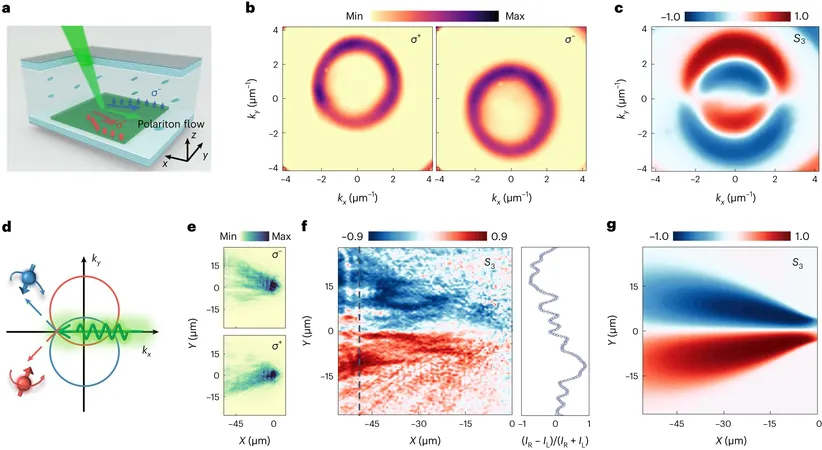
Revolutionary Breakthrough: Room Temperature Manipulation of Polaritons Could Ignite High-Speed Computing Revolution!
2024-12-09
Author: Jia
Introduction
In an astonishing development, researchers have unveiled a method to control special hybrid particles known as polaritons at room temperature, enabling a monumental leap forward in high-speed computing and data processing. Polaritons, which uniquely exhibit behaviors of both light and matter, hold the key to coding and encrypting data at unprecedented speeds.
The Unique Properties of Polaritons
What sets polaritons apart is their intrinsic property called "spin," allowing them to rotate either clockwise or anti-clockwise along an axis. This spin characteristic is instrumental in how these particles encode information. By altering their spin and movement, researchers can effectively change the data stored within these polaritons, creating a novel pathway for rapid data manipulation.
Historical Context
Historically, the manipulation of polaritons has been confined to ultra-low temperatures that mimic the frigid conditions of outer space. This limitation rendered practical applications expensive and logistically challenging. However, a groundbreaking study co-led by Nanyang Assistant Professor Su Rui and Associate Professor Timothy Liew from Nanyang Technological University (NTU), Singapore, demonstrates that polaritons can now be manipulated efficiently at room temperature.
Methodology and Findings
Published in the prestigious journal Nature Photonics, this research highlights an innovative approach where polaritons are generated by directing a green laser onto a material called cesium lead bromide, combined with a layer of liquid crystal molecules in a microcavity setup. By applying an external voltage, the researchers were able to not only control but also adjust the movement of polaritons based on their spin characteristics.
Implications for High-Speed Computing
This pioneering technique opens up the potential for polaritons to store, transfer, and process data at lightning speeds – significantly surpassing the capabilities of current computing technologies, as these particles can move at the speed of light.
Conclusion
As the computing world races to keep up with the growing demands for faster data processing and communication, this breakthrough may very well signal a new era in technology, possibly leading to the development of the next generation of supercomputers. Imagine a future where tasks that previously took hours are completed in mere seconds—not in science fiction, but in our everyday reality! Stay tuned as we eagerly await the implications of this awe-inspiring discovery!
 Brasil (PT)
Brasil (PT)
 Canada (EN)
Canada (EN)
 Chile (ES)
Chile (ES)
 Česko (CS)
Česko (CS)
 대한민국 (KO)
대한민국 (KO)
 España (ES)
España (ES)
 France (FR)
France (FR)
 Hong Kong (EN)
Hong Kong (EN)
 Italia (IT)
Italia (IT)
 日本 (JA)
日本 (JA)
 Magyarország (HU)
Magyarország (HU)
 Norge (NO)
Norge (NO)
 Polska (PL)
Polska (PL)
 Schweiz (DE)
Schweiz (DE)
 Singapore (EN)
Singapore (EN)
 Sverige (SV)
Sverige (SV)
 Suomi (FI)
Suomi (FI)
 Türkiye (TR)
Türkiye (TR)
 الإمارات العربية المتحدة (AR)
الإمارات العربية المتحدة (AR)